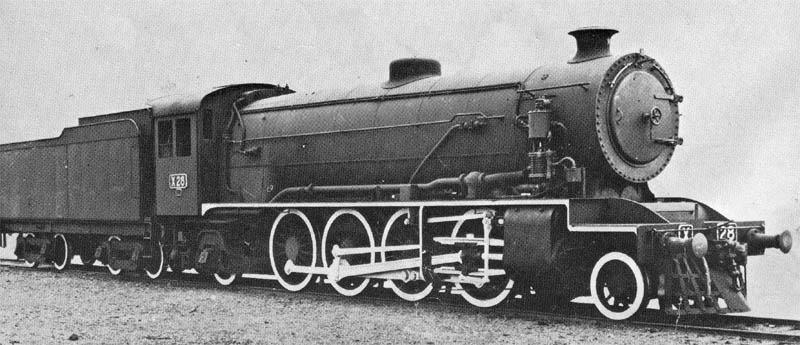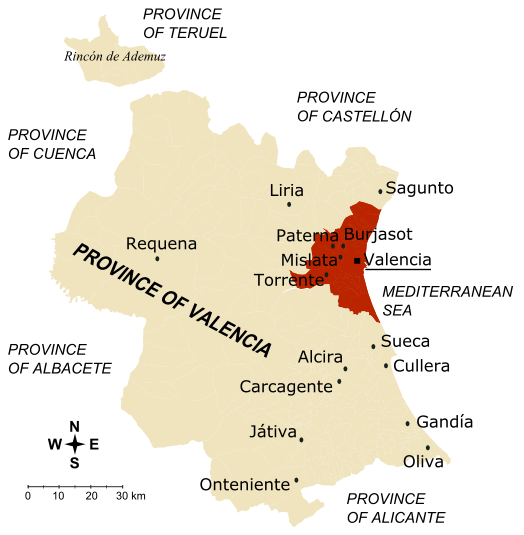|
MACOSA
Stadler Rail Valencia SAU is a Spanish company, mainly producing products for the railway industry, subsidiary of Stadler Rail. History MACOSA The Company was founded in 1947 with the name Material y Construcciones S.A. (or MACOSA) by the merger of the Valencian company ''Construcciones Devis'' (founded by Talleres Devis in 1879) and the ''Sociedad Material para Ferrocarriles y Construcciones S.A.'' of Barcelona; this coincided with the beginning of the industrialisation of Spain. Initially the organisation was not entirely rail orientated, producing buses, trolleys and other road based transportation systems. In the years following its formation the company expanded, with the Valencia plant gaining a 50,000m2 extensionLocomotoras, vapor e ingeniería industrial Subsection: Artí ... [...More Info...] [...Related Items...] OR: [Wikipedia] [Google] [Baidu] |
Renfe Class 319 (later Versions)
The Renfe classes 319.2, 319.3 and 319.4 are six axle Co'Co' medium power mainline diesel-electric locomotives manufactured by Macosa using General Motors Electromotive division components under license. Background and design The first GM mainline locomotives in Spain were the Renfe Class 1900 locomotives, introduced in the mid-1960s, built in both America, and under license by Macosa; over one hundred were built and these were later given the numbers 319-001 to 319-103. In the 1980s the company started to upgrade its diesel fleet; the original class 319s began to be scrapped and a new version, twenty of which, were constructed, forming the sub-class 319.2 with numbers running from 319.201 upwards. The new locomotive continued the GM-EMD tradition using the same engine and bogies but with other components completely new such as the generator. Opinions differ as to whether or not the locomotives represented a re-build or conversion of the old class. However some of the old comp ... [...More Info...] [...Related Items...] OR: [Wikipedia] [Google] [Baidu] |
Engerth Locomotive
The Engerth locomotive was a type of early articulated steam locomotive designed by Wilhelm Freiherr von Engerth for use on the Semmering Railway in Austria. The distinctive feature of the Engerth design was an articulated tender as part of the main locomotive frame. Some of the weight of the tender therefore rested on the driving wheels, improving adhesion, while articulation allowed the locomotive to navigate the narrow curves of mountain railways. Designer Wilhelm von Engerth was born in Pless, Upper Silesia (Now Pszczyna, Poland) on 26 May 1814, the brother of the artist Edouard von Engerth. Initially, he studied architecture, but in 1834 he took up mechanical engineering as a profession. By the late 1850s he was the General Manager of the Imperial Austrian State Railways. Von Engerth was created a Baron (Freiherr) in 1875, and he died on 4 September 1884 in Leesdorf.Translated from the German article History Von Engerth first patented his design for an articulated lo ... [...More Info...] [...Related Items...] OR: [Wikipedia] [Google] [Baidu] |
Stadler Rail
Stadler Rail AG is a Swiss manufacturer of railway rolling stock, with an original emphasis on regional train multiple units and trams, but moving also into Rapid transit, mass rapid transit, High-speed rail, high speed, Inter-city rail, intercity and Sleeping car, sleeper trains. It also produces niche products, such as being one of the last European manufacturers of rack railway rolling stock. Stadler Rail is headquartered at its place of origin in Bussnang, Switzerland. Stadler Rail employed 13,900 employees by 2023. The company consolidates fifty subsidiaries in 23 countries including Algeria, Germany, Italy, the Netherlands, Austria, Poland, Switzerland, Spain, Czech Republic, Hungary, Belarus and the United States, and upcoming joint ventures with Industri Kereta Api, INKA in Indonesia and Medha Servo Drives in India. Stadler Rail employed approximately 6,100 employees by 2012, including 2,750 in Switzerland, 1,200 in Germany, 1,000 in Belarus, 400 in Hungary and 400 in Pol ... [...More Info...] [...Related Items...] OR: [Wikipedia] [Google] [Baidu] |
SBB Am 841
The SBB Am 841 was built at the Meinfesa locomotive plant in Albuixech, Spain in 1994. The locomotives were based on the RENFE Class 311. ''www.lokifahrer.ch'' See also * GA DE900 locomotives : locomotive class including the Am841 and versions sold to railways of Egypt and Israel. * SNCF Class BB 60000 : a later and similar product from the Meinfesa factory in Spain.References External links [...More Info...] [...Related Items...] OR: [Wikipedia] [Google] [Baidu] |
2-8-2
Under the Whyte notation for the classification of steam locomotives, represents the wheel arrangement of two leading wheels on one axle, usually in a leading truck, eight powered and coupled driving wheels on four axles and two trailing wheels on one axle, usually in a trailing truck. This configuration of steam locomotive is most often referred to as a Mikado, frequently shortened to Mike. It was also at times referred to on some railroads in the United States as the McAdoo Mikado and, during World War II, the MacArthur. The notation 2-8-2T indicates a tank locomotive of this wheel arrangement, the "T" suffix indicating a locomotive on which the water is carried in tanks mounted on the engine rather than in an attached tender. Overview The 2-8-2 wheel arrangement allowed the locomotive's firebox to be placed behind instead of above the driving wheels, thereby allowing a larger firebox that could be both wide and deep. This supported a greater rate of combustion and t ... [...More Info...] [...Related Items...] OR: [Wikipedia] [Google] [Baidu] |
Electro-Motive Diesel
Electro-Motive Diesel (abbreviated EMD) is a brand of diesel-electric locomotives, locomotive products and diesel engines for the rail industry. Formerly a division of General Motors, EMD has been owned by Progress Rail since 2010. Electro-Motive Diesel traces its roots to the Electro-Motive Engineering Corporation, founded in 1922 and purchased by General Motors in 1930. After purchase by GM, the company was known as GM's Electro-Motive Division. In 2005, GM sold EMD to Greenbriar Equity Group and Berkshire Partners, and in 2010, EMD was sold to Progress Rail, a subsidiary of the heavy equipment manufacturer Caterpillar Inc., Caterpillar. Upon the 2005 sale, the company was renamed to Electro-Motive Diesel. EMD's headquarters and engineering facilities are based in McCook, Illinois, while its final locomotive assembly line is located in Muncie, Indiana. EMD also operates a traction motor maintenance, rebuild, and overhaul facility in San Luis Potosí City, San Luis Potosí, Mexico ... [...More Info...] [...Related Items...] OR: [Wikipedia] [Google] [Baidu] |
Albuixech
Albuixech (, modern Valencian spelling: , ) is a municipality in the ''comarca'' of Horta Nord in the Valencian Community The Valencian Community is an Autonomous communities of Spain, autonomous community of Spain. It is the fourth most populous Spanish Autonomous communities of Spain, autonomous community after Andalusia, Catalonia and the Community of Madrid wit ..., Spain. References Municipalities in the Province of Valencia Horta Nord {{valencia-geo-stub ... [...More Info...] [...Related Items...] OR: [Wikipedia] [Google] [Baidu] |
Valencia (province)
Valencia ( , ), officially València (), is a province of Spain, in the central part of the autonomous Valencian Community. Of the province's 2.7 million people (2024), almost one-third live in the capital, Valencia, which is also the capital of the autonomous community and the 3rd biggest city in Spain, with a metropolitan area of 2,522,383 people it is also one of the most populated cities of Southern Europe. There are 265 municipalities in the province. History Although the Spanish Constitution of 1812 loosely created the province of València, a stable administrative entity does not arise until the territorial division of Spain in 1833, remaining today without major changes. The Provincial Council of Valencia dates from that period. After the Valencian Statute of Autonomy of 1982, the province became part of the Valencian Community. Valencian and Spanish are the official languages. Geography It is bordered by the provinces of Alicante, Albacete, Cuenca, Teruel, C ... [...More Info...] [...Related Items...] OR: [Wikipedia] [Google] [Baidu] |
Nave
The nave () is the central part of a church, stretching from the (normally western) main entrance or rear wall, to the transepts, or in a church without transepts, to the chancel. When a church contains side aisles, as in a basilica-type building, the strict definition of the term "nave" is restricted to the central aisle. In a broader, more colloquial sense, the nave includes all areas available for the lay worshippers, including the side-aisles and transepts.Cram, Ralph Adams Nave The Catholic Encyclopedia. Vol. 10. New York: Robert Appleton Company, 1911. Accessed 13 July 2018 Either way, the nave is distinct from the area reserved for the choir and clergy. Description The nave extends from the entry—which may have a separate vestibule (the narthex)—to the chancel and may be flanked by lower side-aisles separated from the nave by an arcade. If the aisles are high and of a width comparable to the central nave, the structure is sometimes said to have three nave ... [...More Info...] [...Related Items...] OR: [Wikipedia] [Google] [Baidu] |
Alstom
Alstom SA () is a French multinational rolling stock manufacturer which operates worldwide in rail transport markets. It is active in the fields of passenger transportation, signaling, and locomotives, producing high-speed, suburban, regional and urban trains along with trams. The company and its name (originally spelled Alsthom) was formed by a merger between the electric engineering division of Société Alsacienne de Constructions Mécaniques (Als) and Compagnie Française Thomson-Houston (thom) in 1928. Significant acquisitions later included the Constructions Électriques de France (1932), shipbuilder Chantiers de l'Atlantique (1976), and parts of ACEC (late 1980s). A merger with parts of the British General Electric Company formed GEC Alsthom in 1989. Throughout the 1990s, the company expanded its holdings in the rail sector, acquiring German rolling stock manufacturer Linke-Hofmann-Busch and Italian rail signaling specialist Sasib Railways. In 1998, GEC Alsthom was ... [...More Info...] [...Related Items...] OR: [Wikipedia] [Google] [Baidu] |



